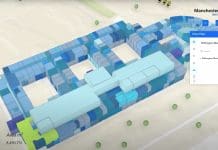A new study from Juniper Research has found that revenues from digital twins will reach $13bn by 2023, as artificial intelligence and machine learning innovation increases
The latest $13bn forecast is considerably higher than the $9.8bn estimation for 2019.
The research found that increased deployments of advanced sensors to capture data, and technological advances such as machine learning, AI and high-performance computing are enhancing the advantages of using digital twins.
The leaders in digital twins
Juniper ranked the leading players in the market and identified those companies that have bolstered their digital twin offerings by combining in-house industrial IoT expertise, strong market reach and close collaborations with technology companies.
The leading players are (in no particular order):
Digital twins enable staff to deliver human aspects of operations effectively
The new research found that advanced digital twin operations will help human workers focus on maximising productivity in areas that the technology cannot address, such as customer service.
Manufacturing accounts for $3.3bn digital twin increase
The research forecasts that digital twin revenues from manufacturing will reach an estimated $4.5bn in 2023, up from $1.4bn in 2019. Manufacturing, as the fastest growing sector, will account for over 34% of total digital twin revenue in 2023. Two other sectors leading growth in net incremental revenues over the forecast period include:
- Transportation – by $2.5bn
- Energy and utilities – by $1.1bn.
Research author, Elson Sutanto said: “In future, we will see numerous trials combining IoT, digital twins and AI to justify time and investment in deploying the technology within and between enterprises. This holds true for multi-location operating industries such as supply chain.”













